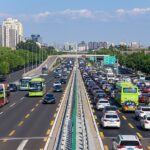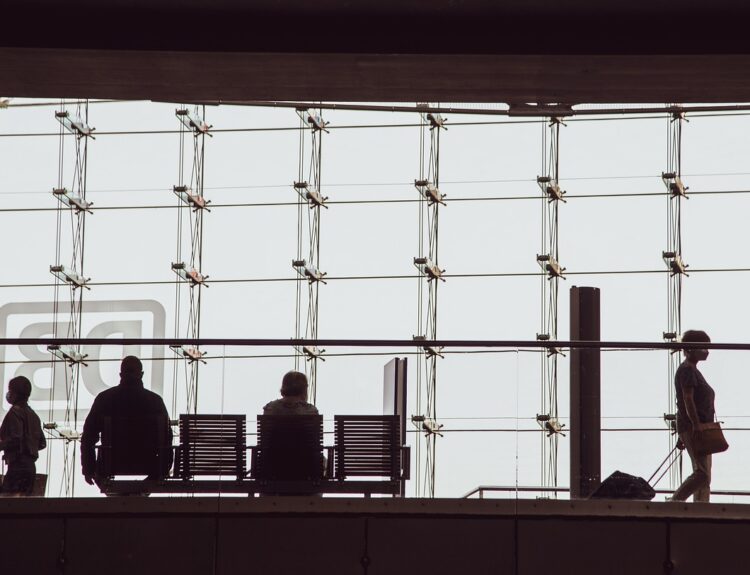As Tesla gears up for its robotaxi launch, Uber’s vast rider network may hold the key to profitability.
- Robotaxis require a large base of paying riders to be economically viable.
- Uber’s stock dropped significantly after Tesla announced its robotaxi plans.
- Uber has partnered with Waymo and Cruise to leverage its existing rider platform.
- Tesla’s robotaxi service aims to operate without drivers, but faces regulatory hurdles.
- Building a competitive robotaxi network could cost between $25 billion and $60 billion.
Robotaxis may not need human drivers, but they certainly need passengers—lots of them. This fundamental truth became evident when Elon Musk announced Tesla’s plans for its own robotaxi. Following the announcement, Uber’s stock plummeted nearly 25% over four months, reflecting investor concerns about competition. However, Uber has since regained some value, thanks in part to partnerships with robotaxi providers like Waymo and Cruise. These collaborations highlight the importance of Uber’s extensive rider base in making the economics of expensive, driverless taxis work. nnUber’s exclusive agreement with Waymo, which operates its own robotaxi service in cities like San Francisco and Los Angeles, will allow Uber to book rides in Waymo’s cars in Atlanta and Austin starting next year. While Uber once aimed to develop its own robotaxis, CEO Dara Khosrowshahi has shifted focus to enhancing its marketplace model. nnDespite Tesla’s stock surging 43% in anticipation of its robotaxi unveiling, Uber’s shares have dipped 5%. Historically, Uber viewed Tesla as a significant threat, even mentioning it in its IPO risk factors. Tesla’s vision for its robotaxi service involves a fleet of cars operating through a dedicated network, similar to Uber’s model. However, replicating Uber’s established ride-hailing network will be challenging, especially given Uber’s scale, which generates over $34 billion in gross bookings annually in the U.S. nnWhile robotaxis eliminate the cost of human drivers, they come with high fixed costs. Analysts estimate that Waymo’s driverless cars cost between $150,000 and $200,000 each, raising questions about their economic viability. A robust network of riders is essential to offset these costs and minimize non-revenue-generating trips. nnBuilding a competitive autonomous vehicle network could require an investment of $25 billion to $60 billion, according to Morgan Stanley. Waymo, the largest active robotaxi network, recently surpassed 100,000 paid weekly trips but reported significant operating losses. Analysts predict it may take a decade for Waymo to recoup its investments. nnAs Tesla prepares for its robotaxi event, it faces regulatory challenges, including a lack of permits for driverless testing in California. Analysts suggest that widespread deployment of Tesla’s robotaxi service may not happen in the near future, giving Uber and its partners time to solidify their market position.·
Factuality Level: 7
Factuality Justification: The article provides a detailed analysis of the current state of robotaxis, particularly focusing on the competition between Uber and Tesla. While it presents factual information and relevant statistics, there are instances of speculation regarding future outcomes and some bias in favor of Uber’s business model. Overall, it maintains a reasonable level of objectivity but could benefit from clearer distinctions between opinion and fact.·
Noise Level: 7
Noise Justification: The article provides a detailed analysis of the competition between Uber and Tesla in the robotaxi market, discussing economic implications, market strategies, and the challenges faced by both companies. It includes data and expert opinions, which support its claims. However, it could benefit from a deeper exploration of the long-term trends and consequences of these developments.·
Public Companies: Tesla (TSLA), Uber (UBER), Alphabet (GOOGL)
Private Companies: Waymo,Cruise
Key People: Elon Musk (CEO of Tesla), Dara Khosrowshahi (CEO of Uber), Brian Nowak (Analyst at Morgan Stanley), Shweta Khajuria (Analyst at Wolfe Research), Joseph Spak (Analyst at UBS)
Financial Relevance: Yes
Financial Markets Impacted: Yes
Financial Rating Justification: The article discusses the financial implications of Tesla and Uber’s plans for robotaxis, mentioning their stock prices and market value changes. It also talks about the costs associated with developing autonomous vehicles and the potential impact on companies like Waymo. The article highlights how these developments affect financial markets and companies in the transportation industry.
Presence Of Extreme Event: No
Nature Of Extreme Event: No
Impact Rating Of The Extreme Event: No
Extreme Rating Justification: The article discusses the developments in the robotaxi industry and the competition between companies like Uber and Tesla, but it does not mention any extreme event that occurred in the last 48 hours.·
Move Size: No market move size mentioned.
Sector: Technology
Direction: Up
Magnitude: Medium
Affected Instruments: Stocks
 www.wsj.com
www.wsj.com 





